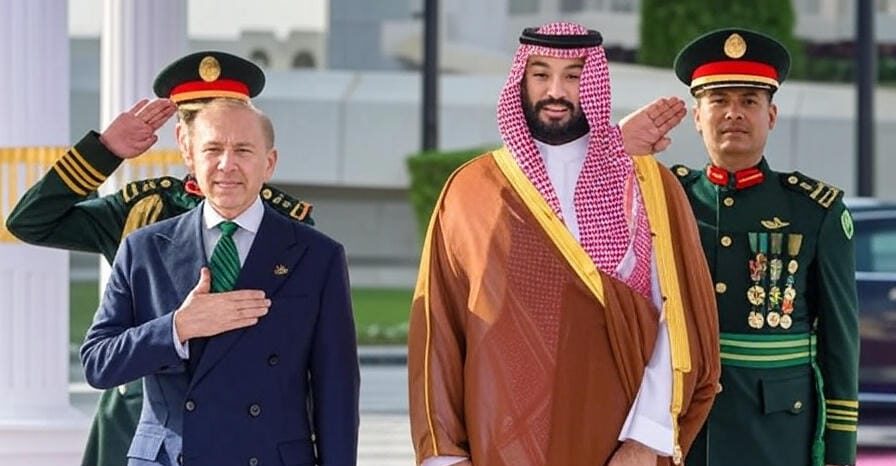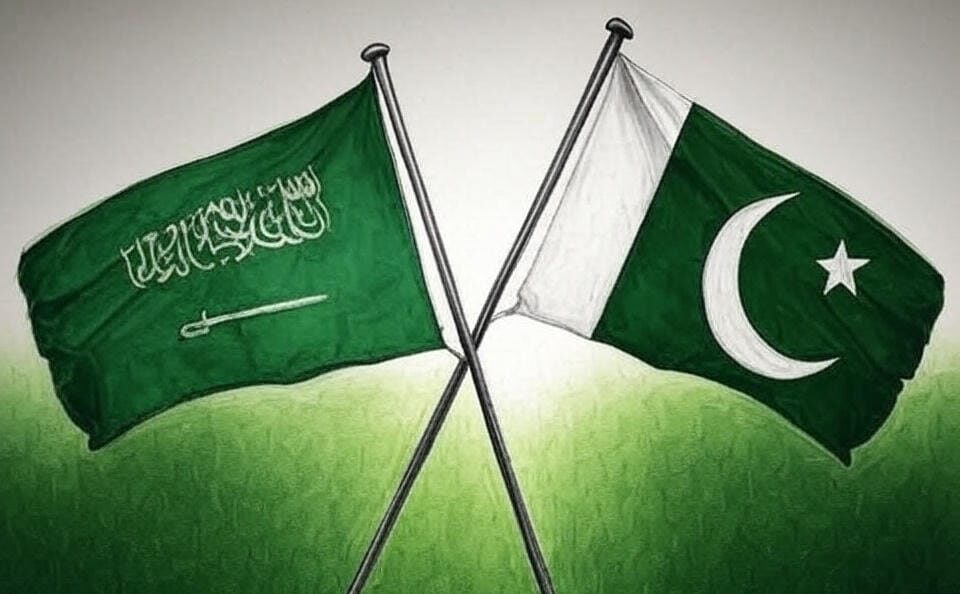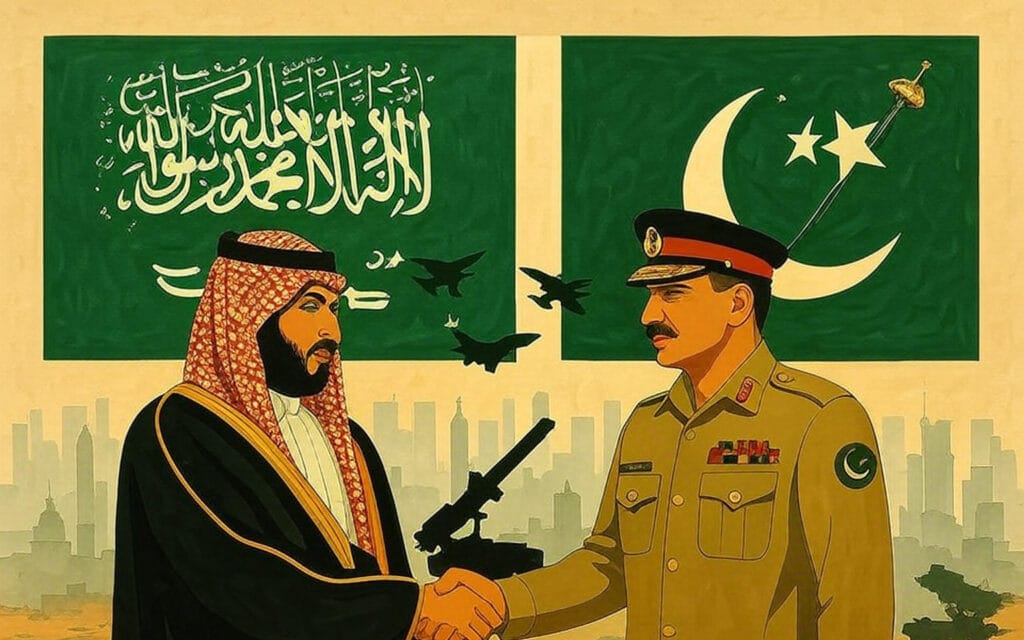
On September 17, 2025, Pakistan and Saudi Arabia solidified their strategic partnership by signing the Strategic Mutual Defence Agreement (SMDA) in Riyadh. The landmark accord, formalized during Pakistani Prime Minister Shehbaz Sharif’s state visit to the Saudi capital, marks a pivotal moment in the two nations’ nearly eight-decade-long relationship. Signed at Al-Yamamah Palace in the presence of Saudi Crown Prince Mohammed bin Salman and Pakistan’s Chief of Army Staff, Field Marshal Asim Munir, the agreement aims to bolster mutual security and promote regional stability amid escalating geopolitical tensions in the Middle East and South Asia. This development underscores a deepening alliance, driven by shared religious, cultural, and strategic interests, and has sparked discussions about its broader implications for regional power dynamics.
Strategic Framework of the Agreement
Core Provisions of the SMDA
The Strategic Mutual Defence Agreement establishes a robust framework for military and security cooperation between Pakistan and Saudi Arabia. At its core, the pact stipulates that an act of aggression against either nation will be treated as an attack on both, committing them to a coordinated response. This mutual defence clause elevates their historical ties into a formal alliance, designed to deter external threats and enhance joint capabilities.
- Joint Military Operations: The agreement facilitates coordinated training programs, joint military exercises, and intelligence-sharing initiatives to strengthen defence readiness.
- Technological Collaboration: Both nations will explore advancements in defence technology, potentially including cyber warfare and missile defence systems.
- Regional Security Focus: The pact emphasizes stabilizing the Middle East and South Asia, addressing threats from both state and non-state actors.
- Economic Synergies: The defence pact complements existing economic ties, with Saudi Arabia hosting over 2.5 million Pakistani expatriates and investing heavily in Pakistan’s infrastructure.
The agreement’s scope is comprehensive, covering all military means, though officials have clarified that it is a defensive framework rather than an offensive alliance. Speculation about Pakistan’s nuclear capabilities extending a protective umbrella to Saudi Arabia has surfaced, but both nations have emphasized the pact’s focus on conventional defence mechanisms.
Historical Context and Strategic Alignment

Pakistan and Saudi Arabia have maintained a close relationship since the 1940s, rooted in shared Islamic values and mutual strategic interests. Saudi Arabia has historically supported Pakistan economically, providing critical financial aid during economic crises, while Pakistan has offered military expertise and personnel to bolster Saudi security. The SMDA builds on this foundation, formalizing their commitment to mutual defence in a rapidly changing geopolitical landscape.
Recent regional developments have catalyzed this agreement. Israel’s military strikes on Qatar on September 9, 2025, targeting Hamas leaders, heightened tensions across the Middle East. Similarly, the India-Pakistan conflict in May 2025, which nearly escalated to nuclear confrontation, underscored the need for stronger alliances. Saudi Arabia, increasingly skeptical of U.S. reliability as a security partner, is diversifying its alliances, while Pakistan seeks to strengthen ties with a key economic partner. The SMDA positions both nations to counter potential threats from adversaries such as Iran or Israel while reinforcing their strategic posture.
Geopolitical Implications and Reactions

Regional Power Dynamics
The Pakistan-Saudi defence pact has significant implications for regional geopolitics. By aligning more closely, both nations aim to deter aggression and project power in their respective spheres. For Saudi Arabia, the agreement reduces reliance on Western allies, particularly the United States, whose commitment to Gulf security has been questioned. For Pakistan, the pact strengthens its position in South Asia, particularly in relation to India, which remains a key rival.
- Countering Iran’s Influence: The agreement could serve as a counterbalance to Iran’s growing regional influence, particularly in light of Saudi-Iranian tensions.
- India’s Cautious Response: New Delhi has acknowledged the pact and is evaluating its implications, though analysts suggest it is not a direct threat to India’s security.
- Nuclear Speculation: While not explicitly stated, the agreement’s mutual defence clause has raised questions about whether Pakistan’s nuclear arsenal could play a role in Saudi defence strategies, though both nations have downplayed this aspect.
Global and Regional Reactions
The international community is closely monitoring the agreement. India has adopted a measured stance, with officials stating they will assess its impact on national security. Western nations, particularly the United States, may view the pact as a sign of shifting alliances in the Middle East. Meanwhile, regional players like Iran and Israel are likely to perceive it as a strategic move to counter their influence. Analysts describe the SMDA as a “watershed moment” that could reshape Middle East-South Asia dynamics, though they caution it may draw Pakistan deeper into Gulf conflicts.
Economic and Strategic Synergies
Beyond its security dimensions, the SMDA reinforces the economic partnership between Pakistan and Saudi Arabia. The Gulf kingdom is a major destination for Pakistani workers, whose remittances are vital to Pakistan’s economy. Saudi investments in Pakistan, including projects under the China-Pakistan Economic Corridor (CPEC), are expected to deepen. The agreement also opens avenues for defence trade, with potential for joint ventures in military hardware and technology.
Why This Matters
The Pakistan-Saudi Strategic Mutual Defence Agreement is a transformative step in their bilateral relationship, signaling a new era of cooperation. By formalizing their commitment to mutual security, both nations are better positioned to navigate complex regional challenges. The pact’s emphasis on joint military efforts and regional stability reflects a shared vision for a secure and prosperous future. However, its implications for global alliances, particularly with the United States and India, will be closely watched. As Pakistan and Saudi Arabia deepen their partnership, the SMDA could redefine power dynamics in the Middle East and South Asia, with ripple effects for years to come.





